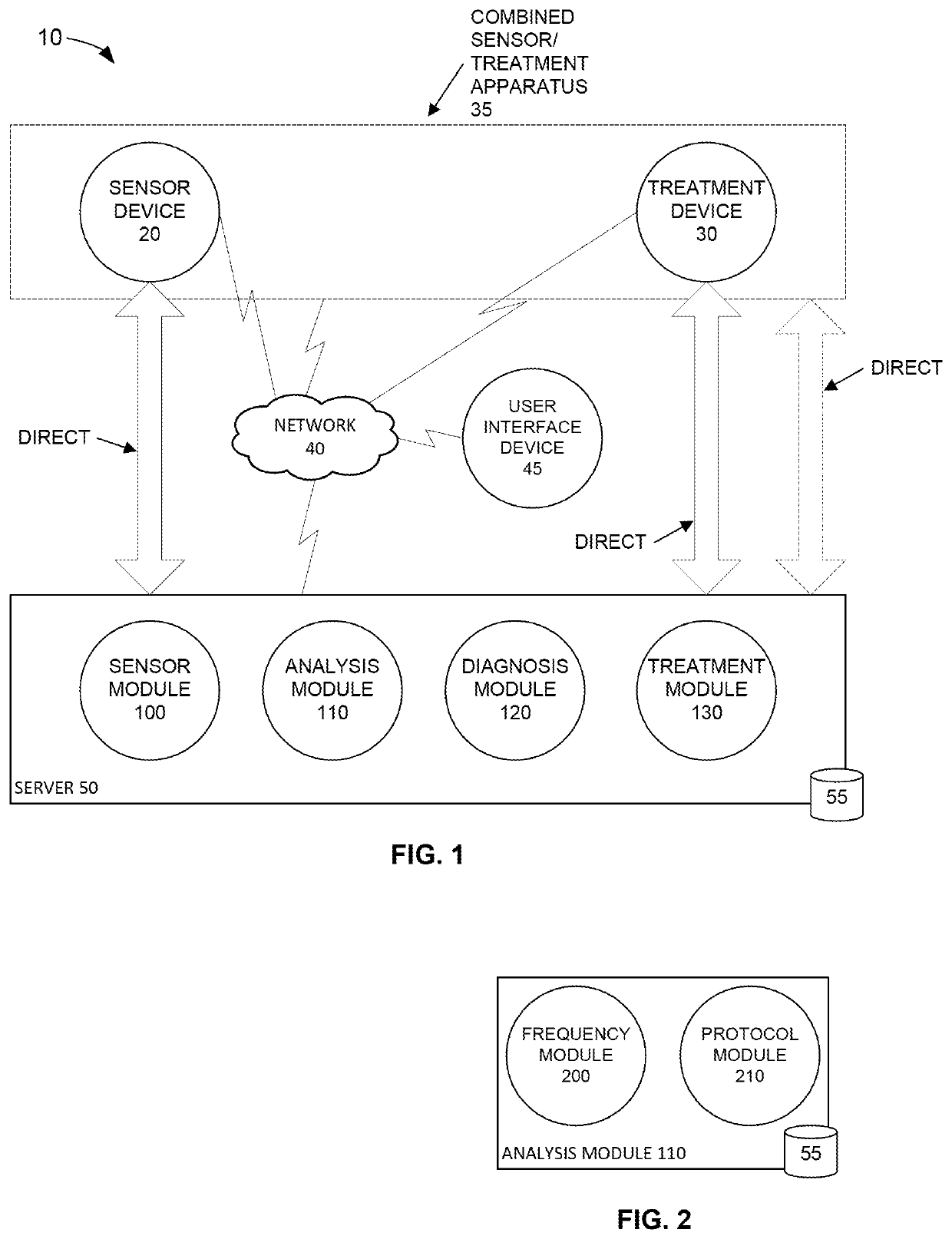Minimum neuronal activation threshold transcranial magnetic stimulation at personalized resonant frequency
a neuronal activation threshold and transcranial magnetic stimulation technology, applied in the field of transcranial magnetic stimulation, can solve the problems of excessive amplitude of tms energy delivered to the human subject, off-limits areas of the brain, and overstimulation of neurons
- Summary
- Abstract
- Description
- Claims
- Application Information
AI Technical Summary
Benefits of technology
Problems solved by technology
Method used
Image
Examples
example embodiments
[0094]In one embodiment, headstrap 500 is used to implement an objective concussion protocol. For example, the headstrap 500 senses EEG data from a subject who suffered a head related injury and provides the EEG data to a companion device such as the user device 515 or the server 50 for analysis. The analyzed EEG data includes a current personalized resonant brain frequency value for the injured subject that can be compared to a predetermined personalized resonant brain frequency value for the subject that was predetermined when the subject was not injured. Comparison of the current and predetermined personalized resonant brain frequency values advantageously provides an objective measurement to assess the ability of the subject to return to regular activity (e.g., work, sports, etc.).
[0095]In one embodiment, the headstrap 500 is used to sense EEG data from a subject to evaluate the subject for suitability to perform a function (e.g., a job function). For example, in one embodiment,...
PUM
 Login to View More
Login to View More Abstract
Description
Claims
Application Information
 Login to View More
Login to View More - R&D
- Intellectual Property
- Life Sciences
- Materials
- Tech Scout
- Unparalleled Data Quality
- Higher Quality Content
- 60% Fewer Hallucinations
Browse by: Latest US Patents, China's latest patents, Technical Efficacy Thesaurus, Application Domain, Technology Topic, Popular Technical Reports.
© 2025 PatSnap. All rights reserved.Legal|Privacy policy|Modern Slavery Act Transparency Statement|Sitemap|About US| Contact US: help@patsnap.com



